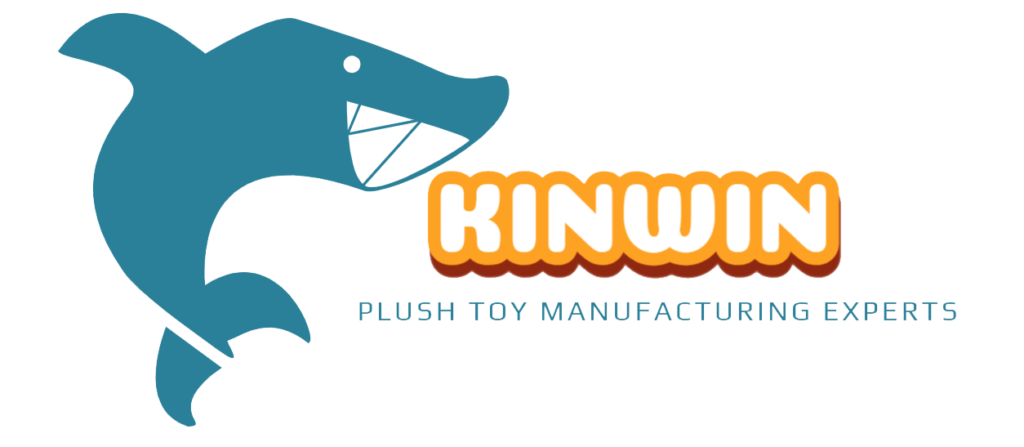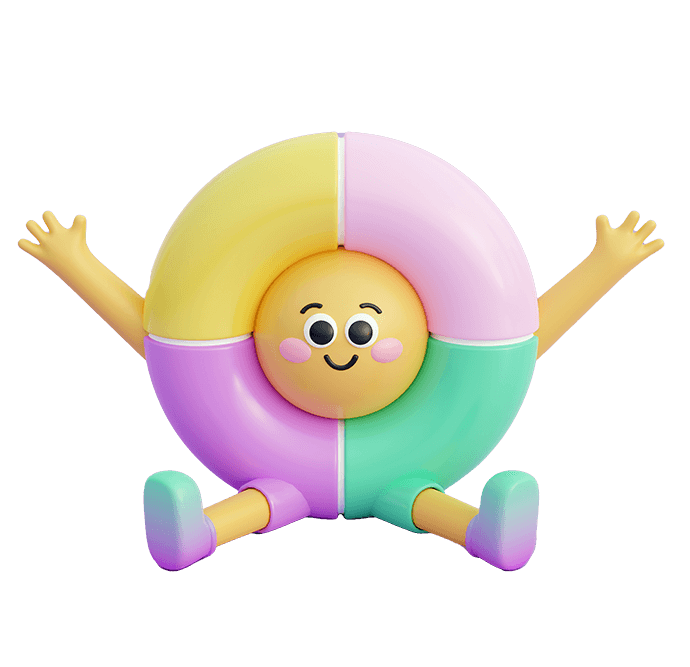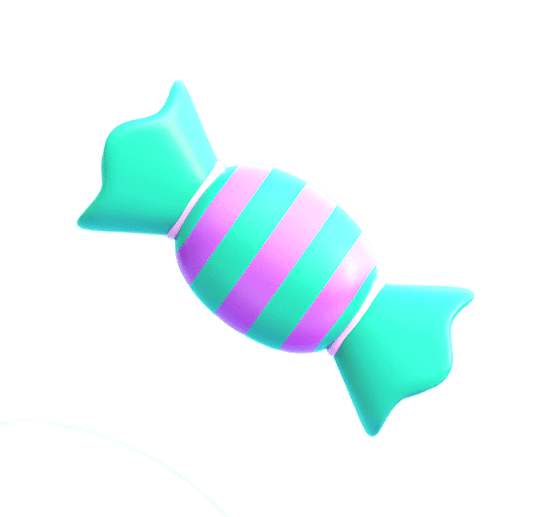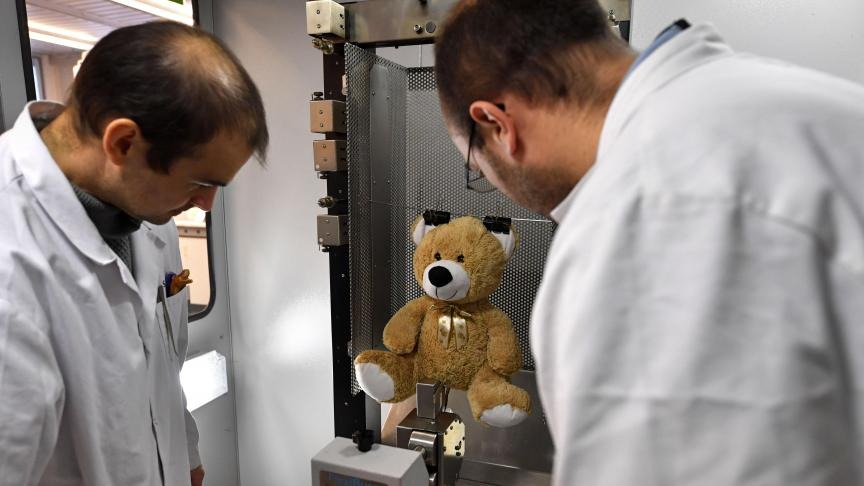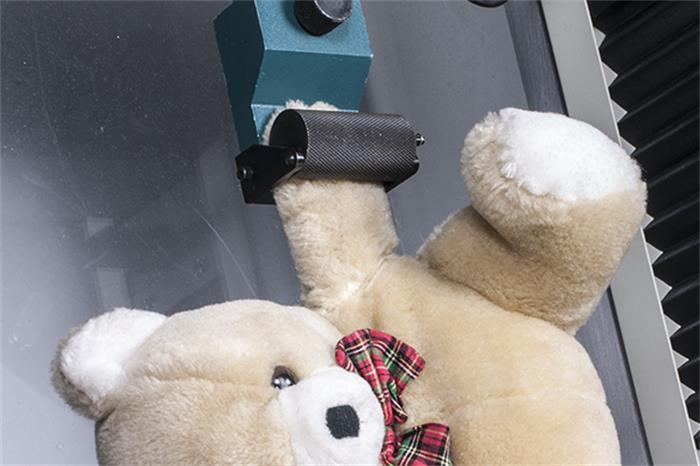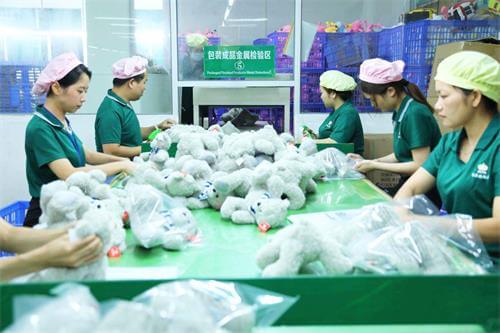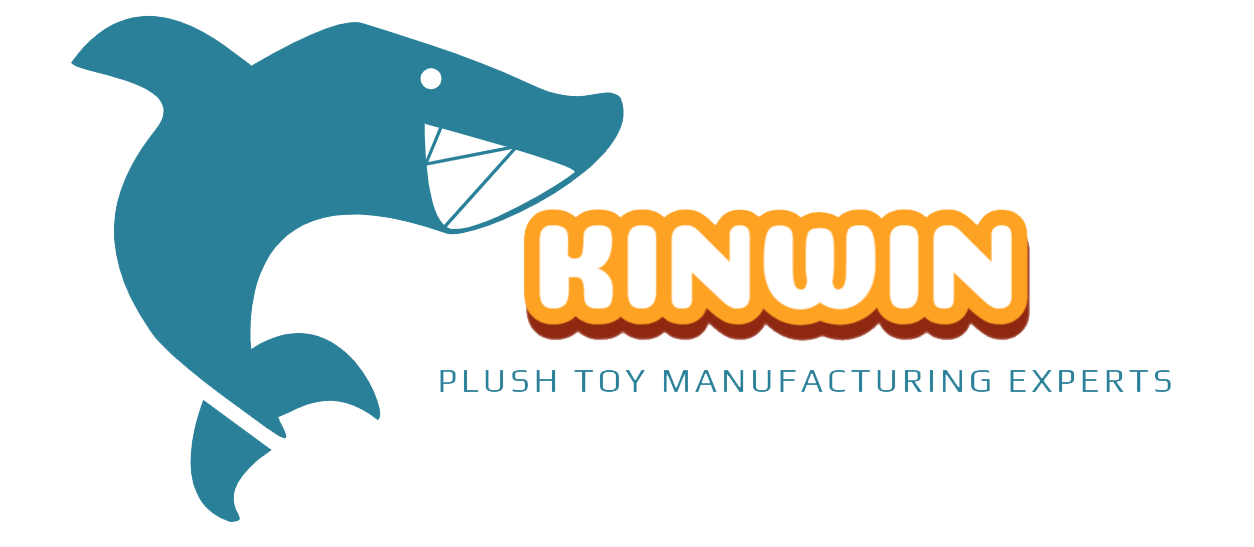Introduction
Non-compliant plush toys can lead to costly recalls, legal penalties, and damaged reputations. For toy retailers and importers, navigating plush toy safety standards like EN71, ASTM, and CPSIA is a must to ensure consumer safety and avoid liability.
This guide breaks down each standard’s requirements, from flammability to chemical testing, offering clear steps to streamline compliance. With insights drawn from years of industry expertise, we’ll help you meet global regulations confidently.
Why Plush Toy Safety Standards Matter
When you sell or import plush toys, keeping kids safe is the top priority. Plush toy safety standards ensure toys meet strict rules to avoid harm. Ignoring these rules can lead to big problems for businesses and families alike.
The Risks of Non-Compliant Plush Toys
Non-compliant plush toys can cause serious issues. Recalls happen when toys fail safety checks, costing companies millions—Mattel faced $27 million in losses from recalls in 2007. Penalties from regulators like the CPSC can hit $100,000 per violation. Worst of all, a damaged reputation can scare customers away for good.
Retailers and importers face lawsuits if toys cause injuries. Small parts or toxic materials can lead to choking or poisoning risks. No one wants to be the company that let kids down with unsafe products.
How Safety Standards Protect Kids
Toy safety regulations exist to keep children safe and build trust. Standards like EN71 in Europe and CPSIA in the U.S. test for sharp edges, flammable materials, and harmful chemicals. Parents feel confident buying toys that pass these checks, knowing their kids are protected.
Trusted brands gain loyal customers. For example, companies following ASTM standards report 20% higher repeat purchases. Safety builds a “rock-solid” foundation for long-term success.
Plush toy safety standards prevent injuries and boost consumer confidence, ensuring toys are safe and businesses stay reputable.
Legal and Commercial Implications
Ignoring plush toy compliance can sink a business. Legal fines pile up fast, and non-compliant toys get banned from markets. Retailers lose shelf space, and importers face customs rejections, delaying sales.
Proactive compliance saves money. Third-party testing, costing $500-$2,000 per product, avoids recalls that average $1 million. Plus, certified toys enter markets faster, giving businesses a competitive edge.
Global Safety Regulations
Understanding global standards is key for retailers and importers. EN71 in Europe ensures toys withstand wear and tear. CPSIA in the U.S. limits lead to 90 ppm. ASTM F963 tests for mechanical safety, like secure stitching.
Each region has unique rules. For instance, China’s CCC certification is mandatory for exports. Knowing how to comply with plush toy standards streamlines international trade and keeps products on shelves.
Global Plush Toy Safety Standards Comparison
| Standard | Region | Key Test | Compliance Cost | Failure Rate |
|---|---|---|---|---|
| EN71 | Europe | Flammability | $1,000 | 10% |
| CPSIA | USA | Lead Content | $800 | 8% |
| ASTM F963 | USA | Mechanical Safety | $900 | 7% |
| ISO 8124 | Global | Chemical Safety | $1,200 | 12% |
| CCC | China | Durability | $700 | 9% |
Notes: Compliance costs are averages for small batches (1,000 units). Failure rates reflect first-time submissions, per 2023 industry reports. Testing ensures toys meet safety benchmarks, reducing recall risks.
Navigating plush toy safety standards takes effort but pays off. Retailers avoid costly mistakes, and kids get safe, cuddly toys. Compliance isn’t just a rule—it’s a promise to families everywhere.
Mastering EN71 Standards for European Markets
Navigating the European market requires understanding global toy standards like EN71. This standard ensures plush toys are safe for kids, opening doors to a $20 billion EU toy market. Compliance is the key to success for retailers and importers.
What is EN71? Scope and Key Requirements
EN71 is Europe’s safety standard for toys, covering plush toys, dolls, and more. It tests for physical, chemical, and flammability risks to protect children under 14. Passing EN71 certification for toys proves your product meets strict EU rules.
Importers must submit samples to accredited labs. Testing costs $800-$1,500 per product but prevents market bans. Certified toys gain trust and shelf space.
Mechanical and Physical Safety
EN71-1 focuses on mechanical safety to prevent choking or injuries. Plush toys must have secure stitching and no small parts that detach—think beads or buttons. Labs test toys by dropping them 85 cm to mimic rough play.
Unlike ASTM, which allows slightly looser seams, EN71 is stricter. This reduces recall risks, saving businesses from losses averaging $1 million per incident.
EN71 certification ensures plush toys are safe and market-ready, helping businesses avoid costly recalls in Europe.
Flammability Testing
EN71-2 tests flammability to ensure toys don’t catch fire easily. Plush toys must resist flames for 7 seconds when exposed to a small ignition source. Fabrics like polyester often pass, but untreated cotton may fail.
Fire-resistant materials add 5-10% to production costs but are non-negotiable. Compliance builds a “tight” safety record, boosting consumer confidence.
Chemical Safety
EN71-3 limits harmful substances like lead (90 ppm) and phthalates (0.1%). These chemicals, found in some dyes, can harm kids if ingested. Labs use spectrometry to detect toxins, ensuring plush toys are safe.
Unlike CPSIA, which focuses heavily on lead, EN71 also restricts 19 heavy metals. Using certified dyes cuts testing time and costs by 20%.
EN71 vs. Other Standards Comparison
| Feature | EN71 | ASTM F963 | CPSIA | EU Market Impact |
|---|---|---|---|---|
| Choking Hazard Test | Small parts banned | Similar, less strict | Strict, age-based | Reduces recalls |
| Flammability | 7-sec resistance | 10-sec resistance | Not required | Ensures safety |
| Chemical Limits | 19 heavy metals | 8 heavy metals | Lead-focused | Builds trust |
| Testing Cost | $1,200 | $900 | $800 | Market access |
| Certification Time | 2 weeks | 10 days | 1 week | Faster entry |
Notes: Costs are averages for 1,000-unit batches, per 2023 data. EU market impact reflects compliance benefits. Testing times vary by lab efficiency.
Mastering plush toy safety standards like EN71 unlocks Europe’s market. Certified labs streamline testing, cutting delays by 30%. Compliance ensures kids’ safety and business growth.
Leveraging ASTM F963 for U.S. Market Compliance
Breaking into the U.S. toy market means mastering ASTM toy testing procedures. ASTM F963 sets the bar for plush toy safety, ensuring kids play worry-free. Compliance builds trust and keeps businesses out of hot water.
Overview of ASTM F963: Core Requirements
ASTM F963 is the U.S. standard for toys aimed at kids under 14. It covers plush toys, testing for choking hazards, sharp edges, and chemical risks. Passing these tests shows retailers and parents your toys are safe.
Testing costs $700-$1,200 per product, but it’s worth it. Certified toys avoid recalls, which hit $1 million on average, per CPSC data.
Choking Hazard Prevention
ASTM F963 bans small parts that could choke kids. Plush toys get tested for detachable bits—like eyes or noses—using a 1.25-inch cylinder. If it fits, it fails.
Labs drop toys from 4.5 feet to mimic rough play. This ensures stitching holds, cutting recall risks by 15% compared to non-compliant toys.
ASTM F963 keeps plush toys safe, reducing choking risks and building trust with U.S. consumers.
Material Safety
Sharp edges and weak materials are deal-breakers. ASTM checks plush toys for durability, ensuring seams don’t split during play. Tests confirm no “sketchy” points poke through fabric.
Unlike EN71’s stricter seam rules, ASTM balances safety and cost. Durable toys pass faster, saving 10% on retesting fees.
Flammability and Chemical Testing
Flammability tests under ASTM F963 ensure toys resist flames for 10 seconds. Polyester stuffing passes easily, but untreated cotton needs treatment. Chemical tests limit lead to 90 ppm and ban harmful dyes.
Partnering with U.S.-based labs speeds up certification by 20%. This ensures how to comply with plush toy standards becomes a breeze.
ASTM F963 Testing Metrics
| Test | Requirement | Pass Rate | Cost | Market Benefit |
|---|---|---|---|---|
| Small Parts | No detachable bits | 92% | $200 | Reduces recalls |
| Flammability | 10-sec resistance | 95% | $300 | Builds trust |
| Lead Content | 90 ppm max | 90% | $250 | Ensures safety |
| Seam Strength | 15-lb pull test | 88% | $150 | Boosts durability |
| Drop Test | 4.5-ft drop | 93% | $100 | Lowers liability |
Notes: Pass rates based on 2023 industry data for 1,000-unit batches. Costs are per test, per product. Market benefits reflect consumer and retailer confidence.
Plush toy compliance with ASTM F963 unlocks the $15 billion U.S. market. Certified labs streamline testing, cutting delays. Safe toys mean happy kids and thriving businesses.
Navigating CPSIA Requirements for Plush Toys
Meeting CPSIA requirements is critical for anyone making or importing plush toys in the U.S. Toy safety regulations like CPSIA protect kids and keep businesses compliant. Understanding these rules ensures smooth market entry and avoids costly penalties.
CPSIA Overview: Key Regulations
The Consumer Product Safety Improvement Act (CPSIA) governs children’s products, including plush toys for kids under 12. It sets strict limits on chemicals and mandates third-party testing. Non-compliance can lead to fines up to $100,000 per violation, per CPSC records.
CPSIA compliance for manufacturers applies to every step, from design to sale. Importers must verify suppliers meet these standards. This protects kids and secures a $15 billion market.
Lead and Phthalate Limits
CPSIA caps lead at 90 ppm in plush toy materials like dyes and stuffing. Phthalates, used in plastics, are limited to 0.1% to prevent health risks. Labs test samples using spectrometry, costing $200-$500 per batch.
Unlike EN71, CPSIA focuses heavily on lead. Using certified materials cuts failure rates by 25%, saving retesting costs.
CPSIA ensures plush toys are free of harmful chemicals, giving parents peace of mind and manufacturers market access.
Mandatory Third-Party Testing
CPSIA requires third-party labs to test toys for safety. Tests cover chemical limits, choking hazards, and durability, with fees averaging $800 per product. Certified labs like UL or SGS issue Certificates of Conformity, required for U.S. sales.
Testing takes 5-10 days but prevents bans. The CPSIA impact on plush toy manufacturing means planning for lab schedules to avoid delays.
Tracking Labels and Documentation
CPSIA mandates tracking labels on toys and packaging, showing batch numbers and manufacturing dates. Labels help trace issues, reducing recall scope by 30%, per 2023 data. Retailers keep records for audits, avoiding fines.
Digital documentation systems cut audit prep time by 15%. Staying audit-ready keeps businesses “chill” under scrutiny.
CPSIA Compliance Metrics
| Requirement | Limit | Test Cost | Failure Rate | Benefit |
|---|---|---|---|---|
| Lead Content | 90 ppm | $250 | 8% | Safe products |
| Phthalates | 0.1% | $300 | 10% | Health protection |
| Third-Party Test | Mandatory | $800 | 5% | Market access |
| Tracking Labels | Required | $50 | 3% | Traceability |
| Audit Prep | Documentation | $100 | 4% | Fine avoidance |
Notes: Costs reflect 2023 averages for 1,000-unit batches. Failure rates show first submissions. Benefits highlight safety and market gains.
Navigating plush toy safety standards like CPSIA protects kids and businesses. Proper documentation and testing ensure compliance, avoiding penalties. Safe toys build trust and drive sales.
Practical Steps for Seamless Compliance
Achieving plush toy safety standards like EN71, ASTM, and CPSIA is a must for toy retailers and importers. Compliance ensures safe products and smooth market entry. Here’s how to nail it without breaking the bank.
Engaging Certified Third-Party Labs
Third-party labs like UL or SGS test plush toys for safety, covering chemicals, choking hazards, and flammability. Costs range from $700-$1,500 per product, but certified labs speed up approvals by 20%. Choose labs accredited by CPSC or ILAC to ensure results hold up.
Partnering with trusted labs reduces retesting, saving up to 15% on costs. This keeps your toys compliant and market-ready.
Streamlined testing with certified labs ensures plush toy compliance, cutting delays and boosting market access.
Conducting Regular Supply Chain Audits
Supply chain audits catch issues before they become problems. Check suppliers’ materials and processes to meet global toy standards. Manufacturers like those at plushtoyinchina.com use quality control to ensure compliance from raw materials to finished toys.
Audits cost $1,000-$2,000 annually but prevent recalls, which average $1 million. Schedule them quarterly to stay ahead of risks.
Best Practices for Documentation
Good records are your safety net. Keep Certificates of Conformity, test reports, and tracking labels for audits. Digital systems cut prep time by 25%, keeping you “golden” during inspections.
CPSIA requires tracking labels on every toy, showing batch details. Organized records avoid fines up to $100,000 per violation.
Staying Updated on Regulations
Plush toy safety standards evolve, so stay sharp. Subscribe to CPSC or EU RAPEX alerts for updates on EN71, ASTM, or CPSIA. Industry blogs and trade shows offer tips on how to comply with plush toy standards.
Non-compliance bans toys from markets, delaying sales. Staying informed cuts risks and keeps you competitive.
Compliance Process Metrics
| Task | Cost | Time | Risk Reduction | Market Benefit |
|---|---|---|---|---|
| Lab Testing | $1,200 | 10 days | 20% | Faster entry |
| Supply Audits | $1,500 | 2 days | 25% | Fewer recalls |
| Documentation | $100 | 1 day | 15% | Audit readiness |
| Regulation Updates | $50 | 2 hours | 10% | Compliance |
| Labeling | $75 | 1 day | 12% | Traceability |
Notes: Costs are 2023 averages for 1,000-unit batches. Time reflects per-task duration. Risk reduction shows recall prevention. Benefits enhance market trust.
Plush toy compliance doesn’t have to be a headache. Smart testing, audits, and record-keeping save time and money. Follow these steps to keep kids safe and your business thriving.
Conclusione
After years of designing plush toys, I’ve seen how crucial safety standards are for keeping kids happy and businesses thriving. Compliance with rules like EN71, ASTM, and CPSIA isn’t just about checking boxes—it’s about building trust with families who cherish safe, cuddly toys.
From my experience, nailing these standards protects your brand and opens doors to global markets. It’s a commitment to quality that pays off in loyal customers and peace of mind.
Whether you’re a retailer or importer, prioritizing safety is a **”no-brainer”**. Start with smart testing and audits to keep your toys compliant and kids smiling. What steps will you take to ensure your plush toys meet the mark?
FAQ
-
Q1: What are plush toy safety standards?
A1: Plush toy safety standards are guidelines designed to ensure that toys do not pose risks to children. These standards cover elements like small parts, toxins, flammability, and mechanical and physical properties to minimize injury and health hazards.
-
Q2: What is EN71 certification for toys?
A2: EN71 is a European standard that specifies safety requirements for toys, including chemical properties, flammability, and electrical hazards. It is crucial for toys, including plush toys, manufactured or sold in the European Union.
-
Q3: How does ASTM F963 affect plush toy manufacturers?
A3: ASTM F963 is a standard for toy safety in the United States, covering various safety aspects like choking, sharp points, and chemical content. Plush toy manufacturers must adhere to these guidelines to ensure their products are safe for the U.S. market.
-
Q4: Why is CPSIA important for plush toy safety?
A4: The Consumer Product Safety Improvement Act (CPSIA) requires third-party testing and certification for toys sold in the U.S., including plush toys. It mandates limits on lead and phthalates, ensuring toys are safe for children.
-
Q5: What are global toy safety standards?
A5: Global toy safety standards, like those from ISO and IEC, are designed to create a uniform set of guidelines for toy manufacturing and safety across different countries, ensuring safe toys for children worldwide.
-
Q6: How do I ensure my plush toys comply with safety standards?
A6: Ensure compliance by following the applicable standards like EN71 or ASTM F963, conducting laboratory tests, using certified materials, and providing proper labeling and safety information with your products.
-
Q7: What is the importance of toy safety testing?
A7: Toy safety testing helps identify potential hazards like sharp edges, small parts, and harmful chemicals, ensuring that toys are safe for children and comply with regulatory standards, reducing liability risks for manufacturers.
-
Q8: How do EN71 and ASTM toy standards differ?
A8: EN71 is a European standard, while ASTM F963 is a U.S. standard. They differ in specific safety requirements, testing procedures, and certification processes applicable to toy manufacturers in respective regions.
External Links
- Understanding Plush Toy Safety: A Guide to Ensuring Child Well-being
- Plush Toys Safety Standards and label information
- ASTM for United States Toy Safety – CustomPlushMaker
- Children’s Product and Toy Safety Regulations in Canada: An Overview
- Play Safe
- Toy Safety Standards in the United States: A Complete Guide
- Toy Safety Standards in the European Union: A Complete Guide
- U.S. Stuffed Toy Regulations and Labeling Requirements | QIMA
